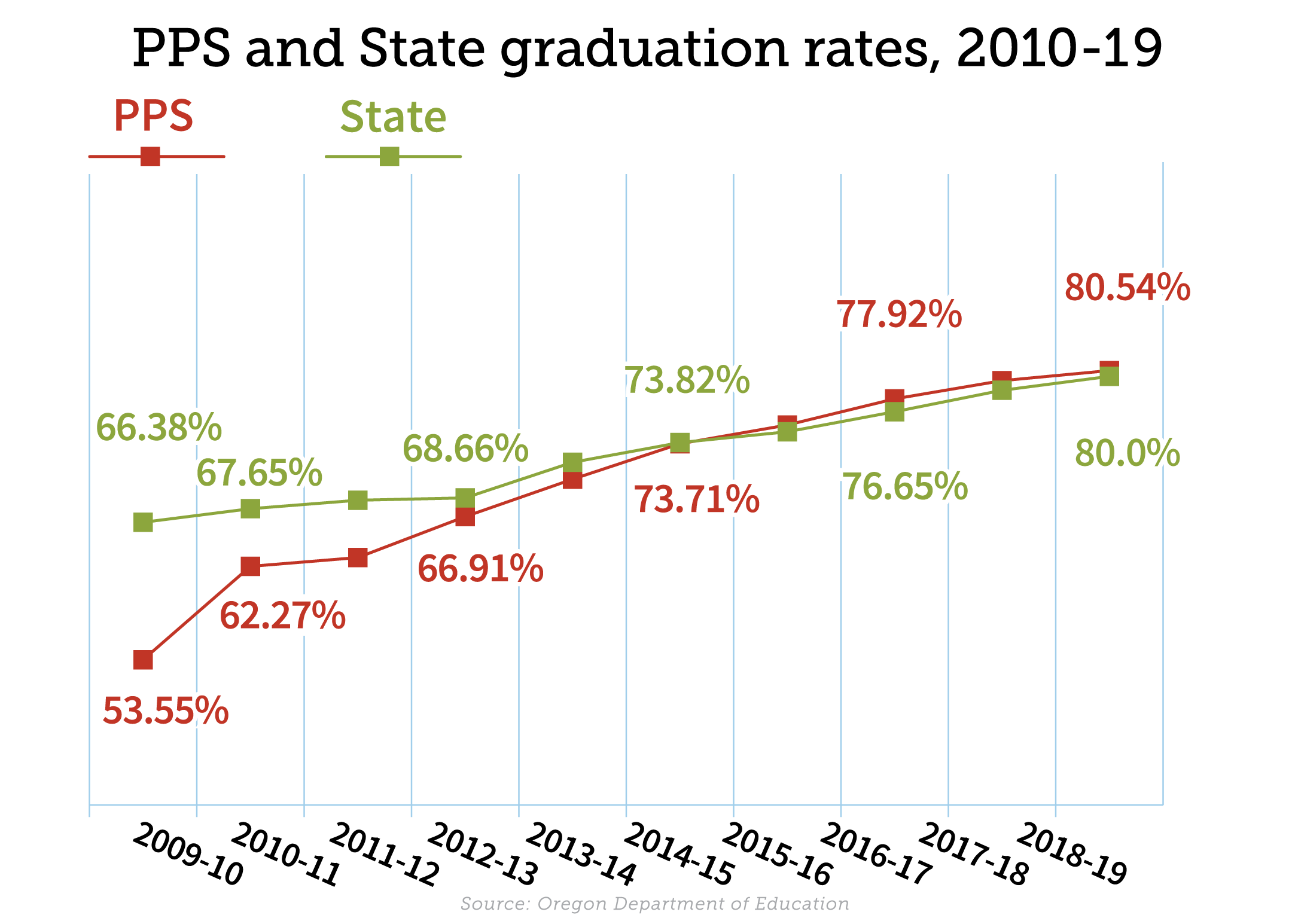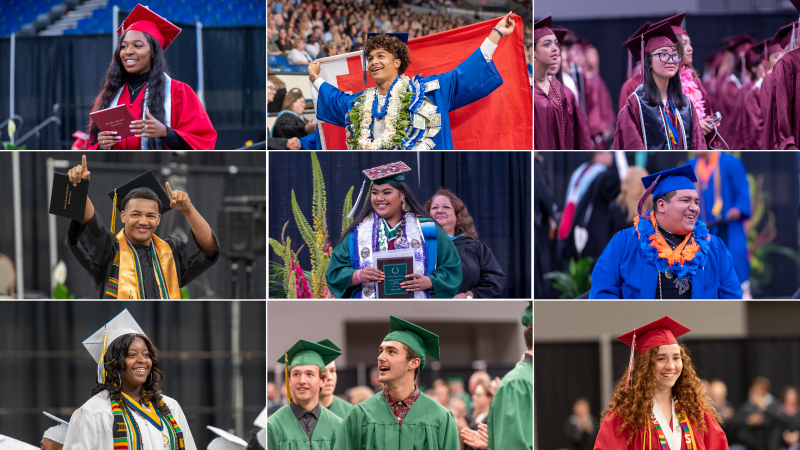-
Graduation rates in PPS rise to 80.5% for 2018-19 school year
1/27/2020Graduation rates in Portland Public Schools rose to 80.5% for the 2018-19 school year, reaching the district's highest percentage since the state of Oregon adopted a four-year cohort model in 2010.
Statewide graduation numbers were released Thursday by the Oregon Department of Education, and PPS’s overall rate increased for the 10th year in a row. The rate continued a dramatic upward trend from 2009-10, when the district’s rate was 53.5%.
“I believe these improved outcomes are a testament to the collective effort of our students, educators and community partners,” Superintendent Guadalupe Guerrero said. “We have been intentional about our commitment to better support all of our students, while placing a special emphasis on our historically underserved students.”

African American, Multi-racial and Latinx students all had graduation rates between 72.3 and 72.6%, continuing an upward trend in the last three years. Among the trends:
- Latinx students have had a 7.1 percentage point increase.
- Multi-racial students have had a 5.8 percentage point gain.
- African American students have posted a 4.9 percentage point increase.
- Native American/Alaska Native students had a 23.7 percentage point gain.
- White students have had a 4.6 percentage point gain.
In 2010, Oregon switched to a four-year cohort model that considers students to be on-time graduates if they earn a regular or modified diploma within four years of entering high school. PPS has used several programs to help graduation rates continue to increase.
In 2017-18, PPS deployed a high school strategic plan that emphasized supporting freshmen, including a focus on credit acquisition, which serves as a key building block in overall high school success. The district also established Student Success Teams at all high schools, consisting of three to four teachers and counselors who collaborate with a set group of ninth-graders during the school year.
“This type of student support has changed the game,” said Joe LaFountaine, Regional Superintendent who oversees high schools. “It is an example of how targeted resources and strategic work can help us reduce disparities among student groups.”
Career and Technical Education (CTE) programs also play an important role in PPS student success. Data shows that students taking more than two courses in CTE programs have a much higher rate of graduation.
“We have had a huge increase in Career and Technical Education programs and have exceeded our goals for students who complete two or more CTE courses,” said Dr. Russell Brown, Chief of System Performance. “And PPS has more students taking Advanced Placement, International Baccalaureate and dual language classes than most other schools nationally.”
Portland Public Schools’ graduation rate was ahead of the overall rate for the state for the fourth year in a row.
By Month
- June 2025
- May 2025
- March 2025
- February 2025
- January 2025
- October 2024
- September 2024
- June 2024
- May 2024
- April 2024
- March 2024
- February 2024
- January 2024
- December 2023
- November 2023
- October 2023
- September 2023
- August 2023
- June 2023
- May 2023
- January 2023
- December 2022
- November 2022
- October 2022
- September 2022
- August 2022
- July 2022
- June 2022
- May 2022
- April 2022
- March 2022
- February 2022
- January 2022
- December 2021
- November 2021
- October 2021
- September 2021
- August 2021
- July 2021
- June 2021
- May 2021
- April 2021
- March 2021
- February 2021
- January 2021
- December 2020
- October 2020
- September 2020
- August 2020
- July 2020
- June 2020
- May 2020
- April 2020
- March 2020
- February 2020
- January 2020
- December 2019
- November 2019
- October 2019
- September 2019
- August 2019
- June 2019
- May 2019
- April 2019
- March 2019
- February 2019
- January 2019
- December 2018
- November 2018
- October 2018
- September 2018
- August 2018
- July 2018
- June 2018
- May 2018
- April 2018
- March 2018
- February 2018
- January 2018
- December 2017
- November 2017
- October 2017
- September 2017
- August 2017
- July 2017
- June 2017
- May 2017
- April 2017
- March 2017
- February 2017
- January 2017
- December 2016
- November 2016
- October 2016
- September 2016
- August 2016
- July 2016
- June 2016
- May 2016
- April 2016
- March 2016
- February 2016
- January 2016
- December 2015
- June 2015



